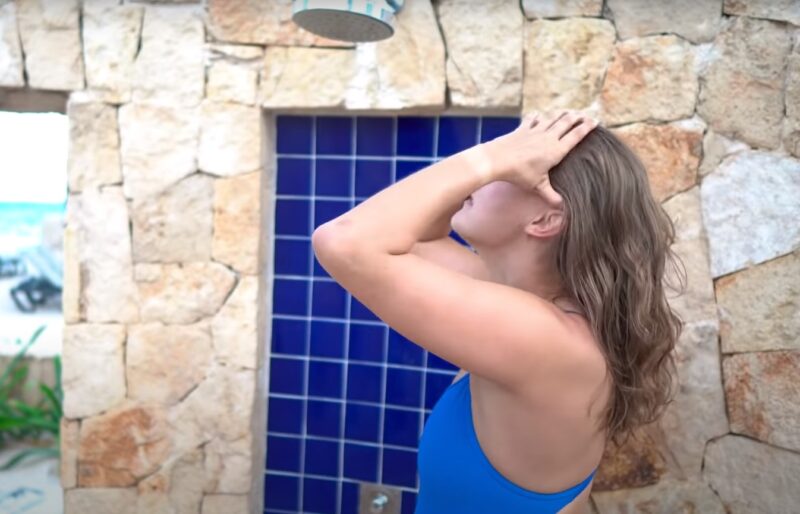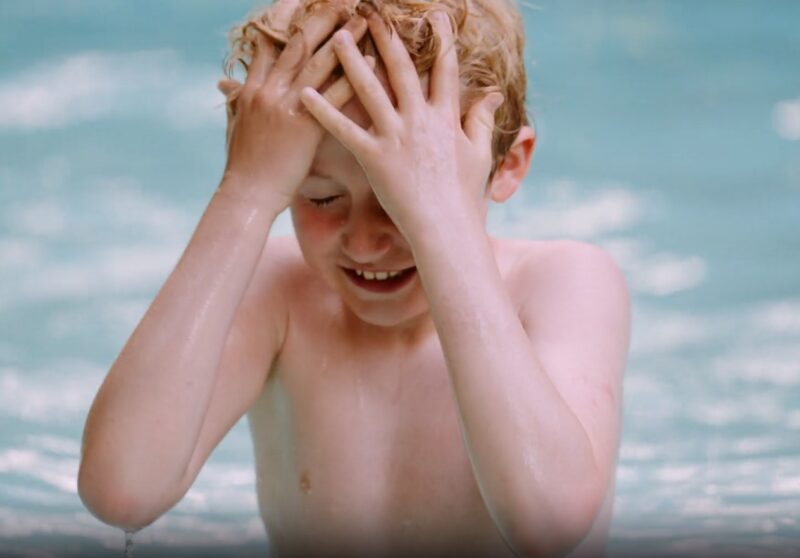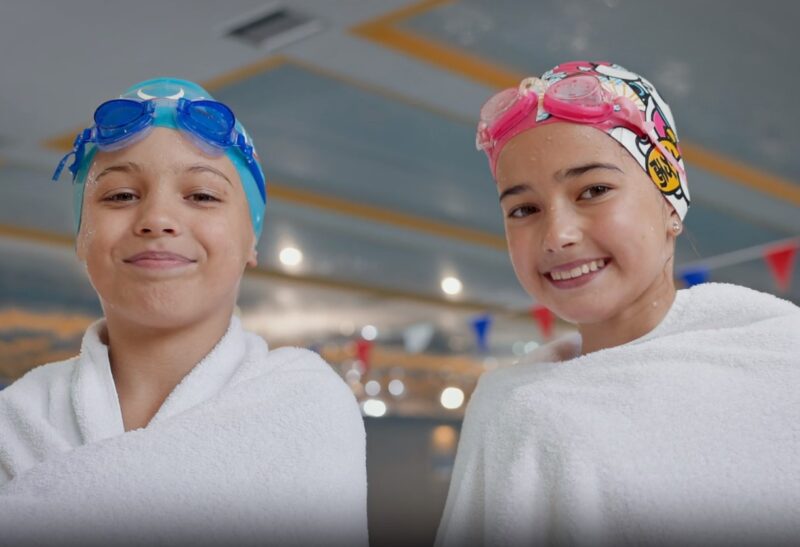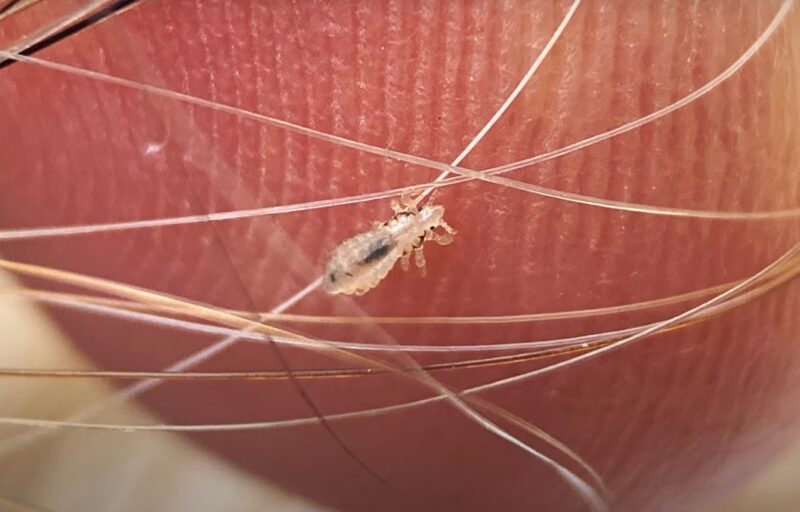Chlorine does not kill head lice, a fact that surprises many. If you or your child has undergone lice treatment, you might wonder about the safety of swimming. Here, we explore the effects of chlorine on lice and the advisability of pool visits post-treatment.
Chlorine’s Effect on Lice

Chlorine, a chemical used to sanitize pool water, aims to eliminate bacteria and viruses. Many believe it also kills lice, yet research contradicts this assumption. Lice, resilient parasites, survive chlorine exposure in pool environments. The concentration of chlorine in pools, regulated for human safety, falls short of levels needed to exterminate lice.
Keep in mind that excess chlorine on your skin can cause irritation. Therefore, be sure to use a proper body wash after swimming in the pool.
Can Lice Survive in Chlorinated Water?
Studies reveal that head lice can endure underwater for several hours, even in chlorinated pools. Their ability to cling tightly to hair strands protects them from being washed away or killed by chlorine. Consequently, a swim in a chlorinated pool does not rid an individual of a lice infestation.
According to Adam Felman: “While head lice can survive in chlorinated pool water, they are unlikely to transmit to other swimming pool users while someone with lice is using the pool.”
Misconceptions and Reality
A common misconception is that chlorine acts as a disinfectant for all types of parasites, including lice. However, the specific biology of lice enables their survival in environments treated with chlorine. It’s crucial to understand that while chlorine maintains pool hygiene by controlling microbial growth, it does not affect lice.
Also check out some of the best non-toxic body lotions to treat your skin in a best possible way.
Risks of Swimming with Lice

Swimming pools offer a communal space for fun, exercise, and relaxation. However, for individuals with head lice, concerns arise about the potential for spreading these parasites in such environments. Lice attach to human hair and feed on blood from the scalp. Their presence causes itchiness and discomfort, leading to a quest for effective remedies and preventive strategies.
Transmission in Water
Contrary to common belief, head lice do not swim, nor do they easily transfer in water. They cling tightly to the hair, making the likelihood of spreading through pool water minimal. The real risk comes from direct head-to-head contact, which can occur outside of swimming activities, such as sharing loungers or using communal changing facilities.
Direct Contact Versus Water Transmission
The mode of lice transmission in pool settings does not directly involve water as a medium. Instead, the risk lies in the proximity of swimmers. Activities that lead to head-to-head contact, such as playing games or participating in swimming lessons, present opportunities for lice to move between hosts. It’s a misconception that lice can swim from one person to another; their transfer requires physical contact.
Role of Pool Accessories
Accessories like swimming caps and goggles become relevant in discussions about lice at the pool. While these items offer a barrier, they are not foolproof. Lice or nits caught in the fabric of a swimming cap might find a new host if shared. Personal items, therefore, should remain personal, not lent or borrowed, to prevent the spread of lice.
Awareness and Prevention
Educating swimmers about the risks and realities of lice transmission can empower them to take preventive actions. Simple measures, such as not sharing towels or hairbrushes and maintaining personal space when not in the water, significantly reduce the risk of spreading lice. Awareness campaigns in community pools and schools can help disseminate this important information, fostering a safer swimming environment for everyone.
Lice Treatment Options
When it comes to eradicating head lice, a range of treatments is at one’s disposal. Over-the-counter (OTC) products, prescription medications, and natural remedies all offer solutions, each with its own set of benefits and considerations. OTC treatments often contain pyrethrins or permethrin, chemicals designed to target and kill lice. Prescription options might include stronger formulations, such as ivermectin or malathion, for more persistent cases.
Prescription Medications
For those facing resistant lice strains or severe infestations, prescription medications provide a potent line of defense. Healthcare providers may prescribe oral treatments or topical solutions that have a higher efficacy rate against both lice and their eggs (nits). It’s crucial to follow a healthcare professional’s guidance when using these treatments to ensure safety and effectiveness.
Over-the-Counter Solutions
OTC lice treatments are widely accessible and can be effective for many cases of head lice. Products containing permethrin or pyrethrins, combined with piperonyl butoxide, target the nervous system of lice. However, it’s important to note that some lice populations have developed resistance to these chemicals, which may necessitate alternative approaches.
Natural and Home Remedies
A growing interest in natural lice treatments has led to the exploration of options like tea tree oil, neem oil, and dimethicone. These substances aim to suffocate or repel lice without the use of traditional insecticides. While some individuals report success with these methods, scientific evidence supporting their effectiveness varies, and they may require more frequent application or combing to fully eliminate an infestation.
Combining Treatments with Mechanical Removal
Regardless of the chosen treatment method, mechanical removal of lice and nits with a fine-toothed comb remains a cornerstone of effective lice management. This process ensures the removal of any lice or nits that survive chemical or natural treatments, reducing the risk of reinfestation. Regular checks and combing sessions are advisable to monitor progress and catch any new lice that may appear.
After Treatment – Swimming Considerations

After undergoing lice treatment, many wonder about the right time to rejoin communal swimming activities. The chemicals used in lice treatments, whether over-the-counter or prescription, often require a period to work effectively. Immersing in a pool too soon after application can dilute these treatments, reducing their efficacy. Experts generally recommend waiting 24 to 48 hours before swimming to ensure the treatment has had sufficient time to act on the lice and nits.
Impact of Chlorine on Treatment Residue
Chlorine, while ineffective at killing lice, can interact with the residue of lice treatments on the hair and scalp. Some treatments contain ingredients that chlorine can break down or wash away, potentially leaving the scalp more vulnerable to a reinfestation. It’s crucial for individuals to follow the specific guidance provided with their treatment product, which may include advisories on swimming post-treatment.
Protective Measures in the Pool
For those eager to return to the pool after treatment, certain protective measures can help minimize risks. Wearing a tightly fitted swim cap may prevent the spread of any remaining lice or nits. Additionally, it can protect the treated area from direct exposure to pool water, preserving the effectiveness of the lice treatment. However, it’s important to remember that while a swim cap can offer some protection, it is not a guaranteed barrier against lice transmission.
Monitoring for Reinfestation
After treatment and return to swimming activities, vigilance is key. Monitoring the scalp for signs of lice or nits ensures early detection and treatment, preventing a full-blown reinfestation. Regular checks using a fine-toothed comb can help catch any lice that may have survived the treatment or been contracted anew from the pool environment.
FAQs
How far can head lice jump?
Head lice cannot jump. They can only crawl from one person to another by direct contact or by sharing personal items like combs, hats, or towels. Lice do not spread easily and they cannot survive more than 24 hours off a human scalp.
What kills 100% of lice?
There is no single treatment that kills 100% of lice and their eggs. Some over-the-counter and prescription medications can kill most of the lice, but they may not kill all the eggs. You may need to repeat the treatment after a week or use a fine-toothed comb to remove the remaining nits. Some home remedies like tea tree oil may also help, but they are not proven to be effective.
Will a hair dryer kill lice?
A hair dryer may kill some lice, but it is not a safe or reliable method. The temperature and the duration of the heat needed to kill lice and their eggs are too high for the scalp and can cause burns. A hair dryer can also blow the lice and their eggs to other parts of the body or the environment, spreading the infestation. You should use a medicated treatment and a nit comb to get rid of lice effectively.
Can a hot shower kill lice?
A hot shower cannot kill lice. Lice and their eggs can survive the temperatures that most people can tolerate in a shower. You need to use a special shampoo or lotion that contains chemicals that can kill lice. You also need to wash your clothes and bedding in hot water and dry them on high heat to kill any lice that may be on them.
Summary
Navigating the challenge of head lice, especially in relation to swimming and treatment, demands informed decisions and proactive measures. Understanding the resilience of lice against chlorine and the importance of timing when returning to the pool post-treatment equips individuals with the knowledge to prevent reinfestation. With the right approach, swimming can remain a safe and enjoyable activity for everyone involved.
